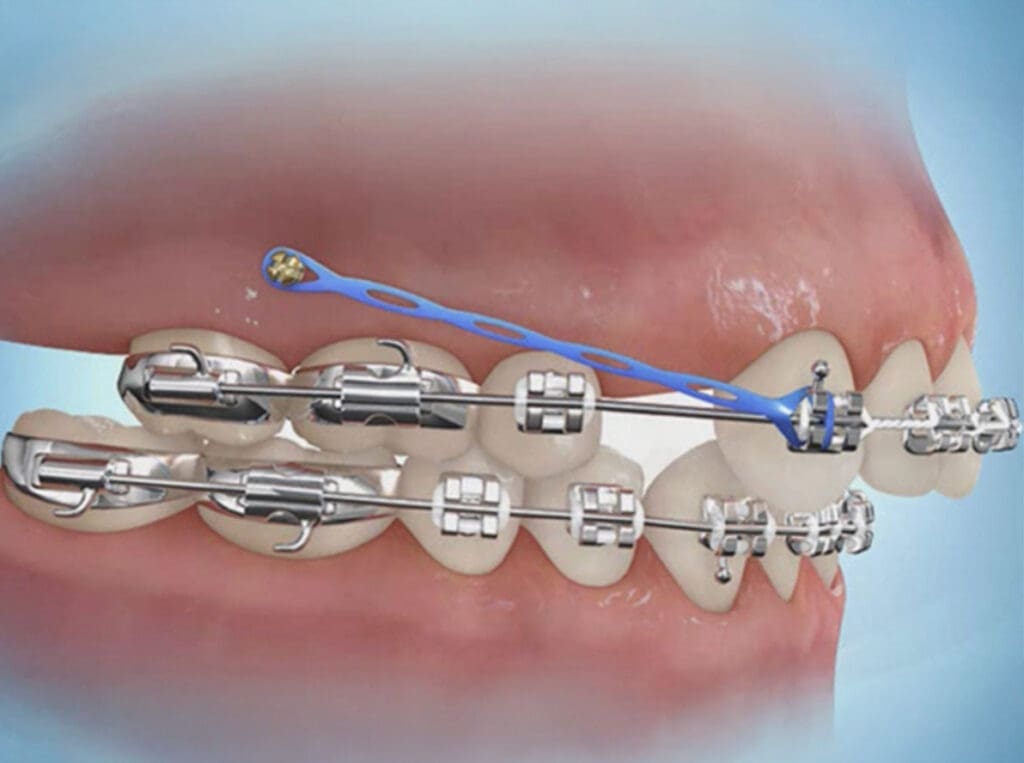If you’re undergoing orthodontic treatment or exploring your options, you may have heard your orthodontist mention something called TADs—short for Temporary Anchorage Devices. While they might sound a bit intimidating at first, TADs are actually a powerful tool in modern orthodontics. At The Orthodontic Centre, we believe in keeping our patients informed every step of the way, especially when it comes to the tools that help us deliver precise, efficient, and effective results.
In this post, we’re diving into what TADs are, how they work, and why they’re particularly helpful for young adults looking for quicker and more targeted orthodontic results.
What Are TADs (Temporary Anchorage Devices)?
TADs are small titanium screws that are temporarily placed in the jaw bone (often between the teeth). They act as fixed anchors, helping move your teeth in a specific direction without relying solely on other teeth for support.
TADs give your orthodontist a stable point of force application, allowing for greater control over tooth movement and often faster treatment times in cases with complex tooth movements and treatment goals that might have been challenging or impossible with traditional methods alone.
Despite their advanced purpose, TADs are minimally invasive, painless to place (requiring just local anaesthesia), and are removed easily once they’ve done their job.
Why Would I Need a TAD?
In some cases, traditional braces or clear aligners can’t achieve certain movements efficiently on their own. TADs may be required for:
- Closure of large spaces left by missing teeth instead of placing dental implants
- Correcting gummy smiles
- Allowing for alternative orthodontic plans to avoid dental extractions or jaw surgery
- Jaw expansion in older patients
What Does Getting a TAD Feel Like?
A lot of young adults are nervous when they first hear about TADs—but rest assured, the procedure is quick and virtually painless. TAD placement typically involves:
- Numbing the area with a small amount of local anaesthetic
- Inserting the TAD into the gum and bone using a gentle, controlled motion
This usually is completed in less than 5 minutes!
Most patients describe the experience as easier than getting a filling. There’s little to no recovery time, and you can return to your normal activities almost immediately. You might feel some mild discomfort for the first day or two, but over-the-counter pain relief is usually enough to manage it.
Caring for Your TAD
Taking care of a TAD is simple, and good hygiene is key:
- Brush gently around the area to prevent plaque build-up
- Rinse with an antimicrobial mouthwash as directed by your orthodontist
- Avoid touching the TAD with your tongue or fingers
- Let your orthodontist know if it feels loose or uncomfortable
TADs are designed to be temporary, usually staying in place for a few months depending on your treatment plan. Once they’re no longer needed, your orthodontist will remove them in a painless, fast procedure—no stitches, no downtime.
Are TADs Right for You?
Not everyone will need a TAD—but if your treatment involves complicated movements or bite correction, they can make a huge difference. At The Orthodontic Centre, we only recommend TADs when they’re truly necessary and will enhance your treatment outcome.
We take the time to explain how they work, answer your questions, and ensure you feel confident and informed.
Let’s Build the Perfect Smile—Together
TADs may be small, but they can have a big impact on your orthodontic journey. Whether you’re wearing braces, aligners, or combining both, The Orthodontic Centre is committed to offering the latest, most effective treatment options tailored to your unique needs.





